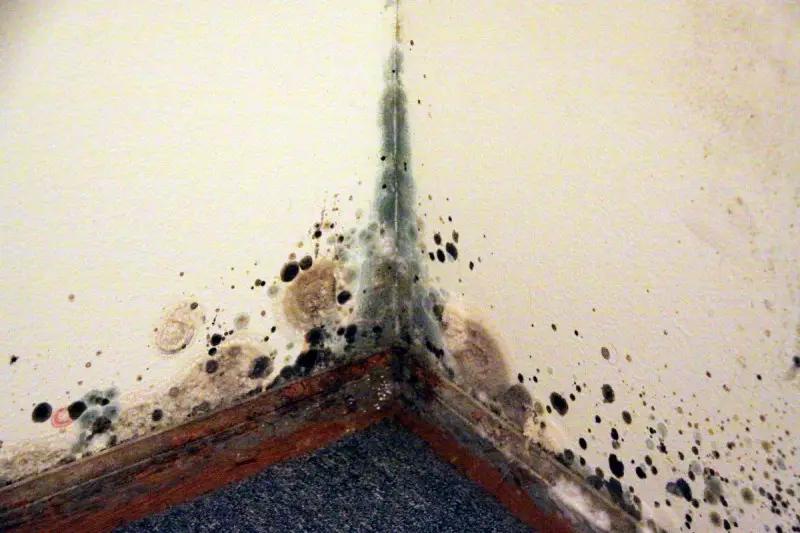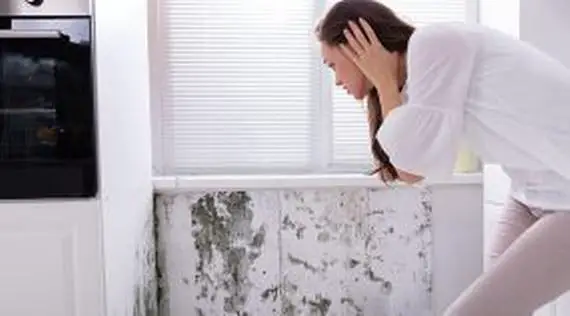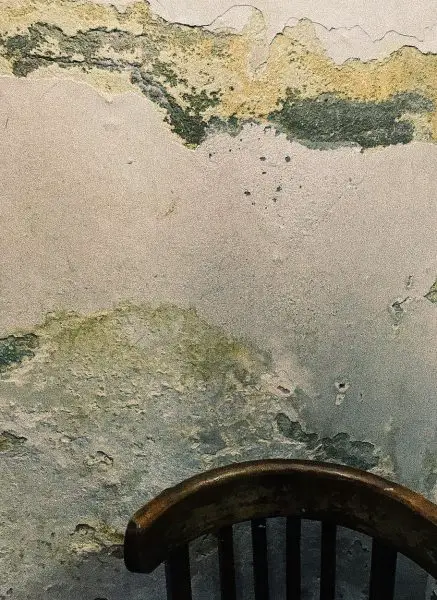
Discover the secrets to getting rid of black mold on drywall with our easy guide. Dive into expert tips, from spotting signs to ensuring a mold-free home!
Ever walked into a room and spotted that unsightly black patch creeping up your wall?
Yep, that’s the notorious black mold. ‘Getting rid of black mold on drywall might sound like a daunting task, but with the right know-how, it’s a breeze.
Let’s dive into the world of mold removal and transform that wall back to its pristine glory, shall we?
Getting Rid of Black Mold on Drywall
Getting rid of black mold on drywall is essential for maintaining a healthy living environment. Begin by identifying the affected areas, then safely remove and dispose of the moldy drywall. Address the source of moisture to prevent future growth, and replace the removed sections with new, mold-resistant drywall.
So you’re fighting the age-old battle with that pesky black mold on our beloved drywall!
If you’re reading this, chances are you’re looking for a trusty guide on getting rid of black mold on drywall. Well, you’re in the right spot!
In this post, we’ll cover everything from spotting the early signs of mold to the nitty-gritty of mold removal and prevention. Ready to reclaim your walls? Let’s get started!
Brief overview of black mold and its dangers
Black mold is not just an unsightly stain on your pristine walls. It’s a sneaky little troublemaker.
Black mold, scientifically known as Stachybotrys chartarum, thrives in damp, humid environments, and drywall often becomes its favorite playground.
But here’s the kicker: It’s not just about aesthetics. This mold releases mold spores, which can affect our respiratory health, especially for those with allergies or asthma.
Prolonged exposure might lead to more severe health issues, making it something you definitely don’t want to ignore.
Importance of timely removal from drywall
Now, let’s chat about why time is of the essence. Imagine spilling a drink on your favorite book.
The longer you let it sit, the harder it becomes to salvage, right?
Similarly, the longer black mold sits on your drywall, the deeper it penetrates, making the removal process more challenging.
Plus, as time ticks on, those mold spores keep floating around, potentially affecting the air quality in your home.
By addressing the issue promptly, you’re not just saving your walls but you’re ensuring a healthier living space for you and your loved ones.
So, the next time you spot that black speck, remember: time is ticking!
Understanding Black Mold
 Alright, let’s play detective for a moment. Before we tackle the problem, it’s essential to understand our ‘culprit’ a bit better.
Alright, let’s play detective for a moment. Before we tackle the problem, it’s essential to understand our ‘culprit’ a bit better.
Enter black mold. It’s not just any regular household annoyance. It’s a bit more mysterious and definitely more mischievous.
In this section, we’ll dive deep into the world of black mold, unraveling its secrets and understanding its ways.
Knowledge is power, after all, and the more we know about this pesky intruder, the better equipped we’ll be to show it the exit door.
Ready to become a mold maestro? Let’s dive in!
What is Black Mold?
Let’s start with the basics, shall we? Black mold, often referred to by its fancy scientific name, Stachybotrys chartarum, is a type of fungus that loves to set up shop in damp and humid environments.
It’s dark, often slimy, and has a knack for appearing in places we’d least expect.
But not all black-colored molds are the notorious Stachybotrys chartarum.
So, while it might look menacing, it’s essential to identify it correctly before hitting the panic button.
Health Risks Associated with Black Mold
Now, onto the part that’s a tad bit concerning. Black mold isn’t just an eyesore and it can be a health hazard too.
When it grows, it releases tiny spores into the air. Inhaling these spores can lead to a range of health issues.
We’re talking sneezing, coughing, skin rashes, and for those with a sensitive respiratory system, the effects can be more pronounced.
Long-term exposure? That’s a story for another day, but let’s just say it’s something we’d all want to avoid.
How Black Mold Affects Drywall
Drywall, with its porous nature, is like a five-star hotel for black mold. Once it checks in, it spreads rapidly, feeding on the organic materials in the drywall.
Over time, this can weaken the structure, making it crumbly and damp.
But it’s not just about the structural damage. The moldy patches can become visible, turning your once pristine walls into a patchy, black-streaked mess.
And remember those spores we talked about? A mold-infested drywall becomes a prime source, releasing them into your living space.
So, while it might start as a small patch, left unchecked, it can become a full-blown wall takeover!
Causes of Black Mold on Drywall
 Ever wondered why that pesky black mold chose your drywall as its new home?
Ever wondered why that pesky black mold chose your drywall as its new home?
It’s like waking up and finding an uninvited guest in your living room!
But, as with most things in life, there’s a reason behind it.
Drywall isn’t just randomly chosen by black mold. Certain conditions make it the perfect breeding ground.
In this section, we’ll explore the ‘whys’ behind black mold’s love affair with drywall.
By understanding the causes, we’re one step closer to showing it the door. Let’s unravel this mystery together!
Excessive Moisture and Humidity
Let’s kick things off with a simple truth: black mold absolutely adores moisture. Think of it as a plant that thrives when watered regularly.
When there’s excessive moisture and humidity in the air, it’s like rolling out the red carpet for black mold.
Drywall, being porous, easily absorbs this moisture, making it a cozy, welcoming environment for mold to grow and flourish.
If you’ve ever felt that sticky, heavy air during a humid day, that’s precisely the kind of atmosphere mold thrives in.
So, keeping things dry is our first line of defense.
Poor Ventilation
Imagine being in a room with no fresh air, just the same stale atmosphere. Sounds suffocating, right?
Well, that’s how mold feels about well-ventilated spaces. Poor ventilation means the air doesn’t circulate well, trapping moisture and creating a stagnant environment.
This is especially true for areas like bathrooms or basements, where the air can feel heavy and damp.
Without proper ventilation to usher out the moisture-laden air and bring in the fresh, mold finds it all too easy to settle down and spread.
Water Leaks and Damage
Water leaks, whether from a broken pipe, roof damage, or even minor cracks, can introduce unwanted moisture into the drywall.
Over time, even a small leak can lead to significant water damage, softening the drywall and making it a prime spot for mold growth.
It’s like giving mold an open invitation! And the tricky part?
Sometimes these leaks are hidden, quietly doing their damage behind the scenes.
Regular checks and prompt repairs are our best bet to keep these sneaky sources of moisture at bay.
Identifying Black Mold on Drywall

Alright, picture this: You’re sipping your morning coffee, and out of the corner of your eye, you spot a dark patch on your wall.
Is it just a smudge? A shadow? Or could it be black mold? Before we jump to conclusions, it’s essential to know exactly what we’re dealing with.
Identifying black mold on drywall is a bit like playing detective, and in this section, we’ll equip you with all the clues you need to crack the case.
Ready to put on your detective hat and get to the bottom of this? Let’s dive in!
Characteristics of Black Mold
Alright, let’s get up close and personal with our uninvited guest. Black mold has some tell-tale signs that make it stand out.
First off, its color, it’s typically dark black, but sometimes it can have a greenish tint.
The texture? Often slimy or gel-like when it’s still growing, but it can turn powdery when it dries out.
And if you’ve got a keen nose, you might pick up on its musty, earthy odor.
It’s not a smell you’d want as a scented candle, that’s for sure! Recognizing these characteristics is the first step in confirming that you’re indeed dealing with black mold.
Difference between Mold and Mildew on Drywall
Now, here’s where things get a tad tricky. Mold and mildew are like distant cousins, related but distinct.
While both are fungi and love moisture, they have some differences.
Mildew is usually powdery or fluffy and comes in shades of white, gray, or yellow.
It’s more of a surface fungus, often seen on plants or organic materials or bathroom tiles.
Mold, especially our notorious black mold, is thicker and penetrates deeper into surfaces, like our drywall.
On drywall, while mildew might seem like a light, powdery stain, black mold appears as dark, irregular patches.
Knowing the difference is crucial because while both are unwanted guests, black mold requires a more aggressive approach to removal.
Why Moldy Drywall Must Be Replaced

Ever had a favorite shirt that got a stubborn stain, and no matter how much you scrubbed, it just wouldn’t budge?
Sometimes, the only solution is to let it go. Similarly, when it comes to moldy drywall, there comes a point where cleaning just won’t cut it.
It’s a tough pill to swallow, especially when we think about the memories attached to our homes.
But, in this section, we’ll dive into the reasons why replacing moldy drywall isn’t just a good idea, but a necessary one.
Trust me; your home will thank you for it!
Limitations of Cleaning Products on Drywall
Let’s kick things off with a simple truth: drywall is a bit like a sponge. It’s porous, which means it soaks up moisture and, unfortunately, gives mold a cozy place to settle.
Now, you might think, Why not just grab a cleaning product and scrub away?
Well, here’s the catch. While many cleaning products promise to banish mold, they often only tackle the surface.
The mold’s roots are called hyphae and they can extend deep into the drywall.
The rest of the mold lurking inside the drywall? It remains untouched, ready to rear its head again.
Plus, excessive scrubbing and moisture can further damage the drywall. It’s a bit like trying to wash a paper shirt; it just doesn’t end well.
Health Implications of Not Replacing Moldy Drywall
Now, onto the part that really hits home. We’ve all heard the saying, Health is wealth, and it couldn’t be truer in this context.
Leaving moldy drywall untreated isn’t just an aesthetic issue, it’s a health concern.
Those mold spores we talked about earlier? They don’t just stay put. They float around, and when inhaled, can lead to respiratory issues, allergies, and other health concerns.
Especially for the young, elderly, or those with compromised immune systems, the risks are even higher.
So, while replacing drywall might seem like a chore, it’s a small price to pay for peace of mind and good health.
Structural Integrity Concerns
Alright, let’s talk house health. Just like we need a strong backbone to stand tall, our homes rely on walls for structural support.
Mold, being the sneaky intruder it is, weakens drywall over time. What starts as a small patch can spread, compromising the wall’s strength.
And a weakened wall? It’s not just a safety hazard but can also lead to more significant repair costs down the line.
Think of it as a chain reaction; one compromised area can affect the surrounding sections.
By addressing moldy drywall promptly, we’re not just saving our walls but also ensuring our home stands strong for years to come.VI.
Steps to Replace Moldy Drywall
 Alright, roll up those sleeves and put on your DIY hat, because it’s time to dive into action mode!
Alright, roll up those sleeves and put on your DIY hat, because it’s time to dive into action mode!
While the idea of replacing moldy drywall might sound like a massive project, with the right steps and a sprinkle of determination, it’s totally doable.
Think of it as giving your home a mini-makeover, out with the old and in with the new.
In this section, we’ll walk you through the process, step by step, ensuring that by the end, you’ll be ready to tackle that moldy drywall like a pro.
Ready to embark on this home improvement adventure? Let’s get started!
Safety Precautions
First things first, safety always comes first. Before diving into the world of drywall replacement, it’s essential to gear up.
Grab a pair of gloves, safety goggles, and a mask. These aren’t just for looking professional.
They’ll protect you from inhaling mold spores and keep your hands safe from any sharp tools or debris.
And hey, while you’re at it, ensure the room is well-ventilated. Open up those windows and let the fresh air flow!
Identifying the Extent of Damage
Now, let’s play detective for a bit. Before we start tearing down walls, it’s crucial to figure out how much of the drywall is affected.
Sometimes, what’s visible on the surface is just the tip of the iceberg. Use a flashlight to inspect the area closely, and feel the drywall.
If it’s soft or crumbly, that’s a sign that the mold has done its damage.
Remember, it’s always better to overestimate the affected area than underestimate it.
Removing Affected Drywall
Alright, time to get down to business. Using a utility knife, cut out the damaged section of the drywall.
It’s a good idea to cut a few inches beyond the visible mold to ensure you’re removing all affected areas.
Be gentle, take your time, and remember to dispose of the moldy pieces safely. A heavy-duty garbage bag should do the trick!
If the area is large it might be easier to replace the entire panel instead of trying to patch it.
If decide to do this instead of trying to patch it, take a good look inside the wall cavity to see if the mold has spread.
Treating Surrounding Areas to Prevent Future Growth
Now that the damaged drywall is out of the picture, let’s ensure its pesky mold friends don’t make a comeback.
Clean the surrounding areas with a mold-killing solution. This will help eliminate any lingering spores and prevent future growth.
And while you’re at it, check for any sources of moisture. Remember, mold loves dampness, so let’s not give it a reason to return.
Installing New Drywall
Here comes the fun part, giving your wall a fresh start! Measure the area where the old drywall was removed and cut a new piece to fit.
Secure it in place using screws and ensure it sits flush with the surrounding wall.
Once it’s in place, seal the seams with joint compound, sand it smooth, and voila! Your wall is ready for a fresh coat of mold resistant paint.
Preventive Measures to Avoid Future Mold Growth
Now, let’s chat about the future. We’ve tackled the mold issue, but how do we ensure it doesn’t pop up again?
Simple preventive measures can make a world of difference.
Ensure your home has proper ventilation, especially in areas prone to moisture like bathrooms.
Regularly check for water leaks and fix them promptly. And consider investing in a dehumidifier if you live in a particularly humid area.
A little vigilance goes a long way in keeping your home mold-free!
There you have it! With these steps in hand, you’re well on your way to bidding farewell to moldy drywall and welcoming a fresh, clean living space.
When to Call a Professional
Okay, let’s have a heart-to-heart for a moment. While we all love a good DIY project and that unbeatable feeling of accomplishment, there are times when it’s best to call in the cavalry.
Dealing with mold can be a bit like trying to tame a wild beast and sometimes, it’s more than we bargained for.
In this section, we’ll chat about those moments when it’s wise to step back, pick up the phone, and bring in a professional.
Because, let’s face it, there’s no shame in asking for a little help when things get tricky. Ready to explore when to hand over the reins? Let’s dive in!
Identifying Extensive Mold Growth
Alright, picture this: you spot a tiny patch of mold on your drywall, and you think, I’ve got this!
But as you start investigating, it seems like the mold is playing hide and seek, popping up in more places than you initially thought.
When mold growth starts looking like a sprawling city map, it might be a sign that the infestation is more extensive than a simple DIY can handle.
Extensive mold growth can creep into hidden spaces, behind walls, and even under flooring.
In such cases, a professional has the tools and expertise to assess the full extent of the problem and tackle it head-on.
Health Concerns
Let’s get real for a second. Our health and the well-being of our loved ones are priceless.
If anyone in your household starts showing symptoms like persistent coughing, sneezing, skin rashes, or even more severe respiratory issues, it’s a clear signal to bring in the experts.
Mold, especially black mold, can have various health implications, and it’s always better to be safe than sorry.
A professional can ensure that mold is removed safely, minimizing health risks.
Ensuring Complete Mold Removal
Ever cleaned something, felt super proud, and then spotted a missed spot a day later?
Mold can be sneakier than we give it credit for. Even if you’ve done a thorough job, there’s always a chance of some mold lurking in a corner you might have missed.
Professionals come equipped with specialized equipment, like infrared cameras, to detect mold in places the naked eye can’t see.
They ensure that every last spore is addressed, giving you the peace of mind that your home is truly mold-free.
In the grand scheme of things, while rolling up our sleeves and tackling issues ourselves feels empowering, there are moments when calling in a professional is the best course of action.
After all, our homes are our sanctuaries, and ensuring they’re safe and healthy spaces is always worth the extra effort.
Mold on Drywall FAQs
Alright, let’s switch gears for a moment. You know those burning questions that pop up in our minds, the ones we’re almost certain everyone else is wondering about too? Yep, we’ve all been there!
And when it comes to mold, there’s no shortage of queries. In this section, we’ll tackle some of the most frequently asked questions about black mold on drywall.
From the curious to the downright practical, we’ve got you covered. Ready to quench that thirst for knowledge? Let’s dive into the FAQs!
Q: Can you clean black mold off drywall without replacing it?
A: While minor mold spots can sometimes be cleaned with mold-killing solutions, black mold that has penetrated drywall typically requires replacement.
Cleaning only addresses the surface, and mold inside the drywall can continue to grow and spread.
Q: How do I prevent mold from returning after replacing drywall?
A: To prevent mold’s comeback tour, ensure proper ventilation in the room, fix any water leaks promptly, and consider using mold-resistant drywall or paint.
Regularly check for signs of moisture and consider using a dehumidifier in particularly humid areas.
Q: How do I know if I have black mold behind my drywall?
A: Signs include visible mold growth on the surface, a musty odor, or discoloration on the wall.
However, the surest way to know is by cutting a small inspection hole and checking directly or consulting a mold inspection professional.
Q: What is the cost for professional mold removal from drywall?
A: Costs can vary based on the extent of the damage, your location, and the professional you hire.
On average, mold remediation can range from $500 to $6,000, but severe cases can go higher.
It’s best to get quotes from multiple professionals to gauge the cost.
Q: Are there any temporary measures before replacing moldy drywall?
A: While replacement is the most effective solution, temporary measures include isolating the affected area, using dehumidifiers to reduce moisture, and cleaning visible mold with mold-killing solutions.
However, these are short-term fixes, and addressing the root cause is crucial.
Getting Rid Of Black Mold On Drywall Conclusion

Well, folks, we’ve journeyed through the ins and outs of black mold on drywall, from those sneaky causes to the nitty-gritty of mold removal.
It’s been quite the adventure, hasn’t it? As we wrap things up, let’s take a moment to reflect on what we’ve learned and how we can use this knowledge to keep our homes safe, healthy, and mold-free.
Ready for some final thoughts and takeaways? Let’s tie it all together!
Recap of the importance of mold removal from drywall
Let’s take a stroll down memory lane, shall we? We’ve chatted about how black mold isn’t just an unsightly blemish on our walls.
Beyond the aesthetics, it’s a health concern, releasing spores that can play havoc with our respiratory systems.
Especially for those with allergies or asthma, this isn’t something to brush under the rug.
Removing mold from drywall isn’t just about home improvement, it’s about creating a safe and healthy environment for everyone under your roof.
Emphasis on the necessity of replacing moldy drywall
Now, here’s a point we’ve hammered home, and for a good reason!
Cleaning might seem like the easier route, but when it comes to moldy drywall, replacement is the gold standard.
Why, you ask? Because drywall is porous, and mold, being the sneaky intruder it is, can penetrate deep, making surface cleaning a mere band-aid solution.
Replacing ensures we’re getting rid of the problem root and stem, giving us peace of mind that our walls are genuinely mold-free.
Encouragement for regular checks and maintenance
Alright, a little pep talk to wrap things up. Think of your home as a living, breathing entity.
Just like we go for regular check-ups, our homes benefit from a little TLC now and then.
Regular checks, especially in moisture-prone areas, can help spot potential mold issues before they become full-blown problems.
And remember, maintenance is always easier (and often cheaper) than repair.
So, here’s to being proactive homeowners, always one step ahead of pesky problems like mold!


